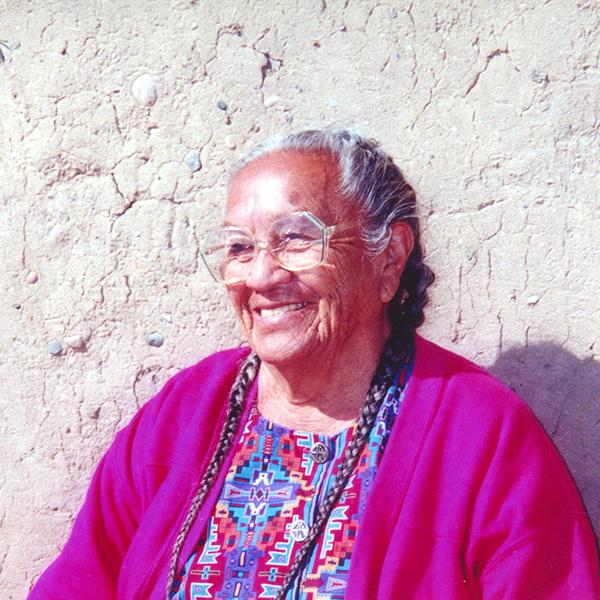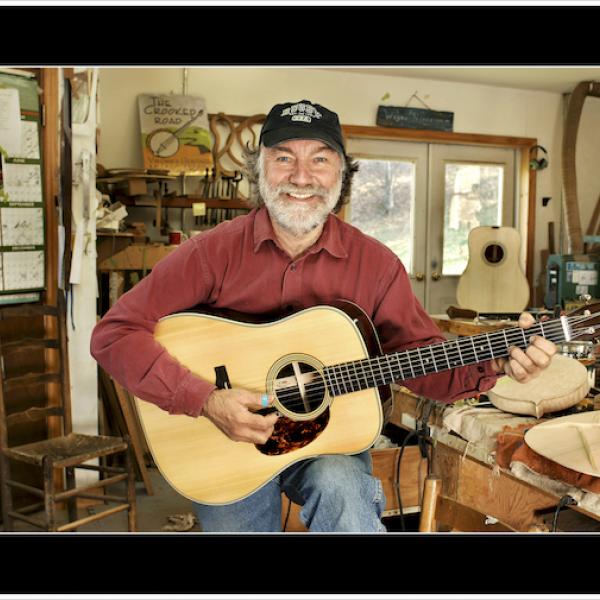For the Love of It

Can one man be responsible for a city’s character? If you’re 1982 NEA National Heritage Fellow Philip Simmons, that answer is yes. If you’ve been to Charleston, or even just seen pictures of the South Carolina city, chances are you’ve seen Simmons’ work. Thanks to “the poet of ironwork,” as he’s been called, the light and lacy iron ornamentation that has been part of the city’s architectural vernacular since colonial times is still one of its most recognizable features. Not a bad legacy for a man who never sought fame but became one of the most famous—and revered—men in South Carolina nonetheless.
Simmons’ story starts in 1912, when he was born on Daniel Island, a small community off the coast of Mt. Pleasant, South Carolina. Raised first by his grandparents, as a young boy Simmons was sent to live with his mother in Charleston where he could get a better education. By 13, he was apprenticed to Peter Simmons (no relation) who ran a blacksmith shop on Calhoun Street, a shop that Philip Simmons eventually took over, working there for nearly eight decades.

Philip Simmons at his blacksmith shop. Photo by Tom Pich |
According to a 2008 interview with Philip Simmons, he had a choice of trades close to where he lived in Charleston, including shoemaking and tinsmithing. He chose blacksmithing, however, because as he described, “I love action, and a lot of action was going on in the blacksmith shop.” As Carlton Simmons, Simmons’ nephew and one of his apprentices, put it, “He liked the excitement of being in the fire.”
When Philip Simmons first started learning his trade, the work was practical: shoeing horses or making and repairing tools and wagons. With the advent of motorized vehicles, many predicted that the blacksmith’s trade would die out. Peter Simmons, however, had other ideas. As Philip Simmons noted, “The old fellow told me, ‘There’s always going to be something for the blacksmith to do.’”
The direction of Philip Simmons’ work changed thanks to a simple request circa 1938. He was asked to build a decorative gate for a walkway. Despite his initial reluctance since he had no training in decorative work, Simmons accepted the commission. According to local lore, the client convinced him by assuring Simmons that making curves for a gate would be the same as curving a horseshoe.
Simmons’ mastery of the tight C-scrolls and S-scrolls that characterized Charleston’s ironwork garnered him a reputation as a top-notch artist that only grew with time. In addition to mastering the traditional style of decorative work that had proliferated in Charleston during its colonial era, Simmons also developed his own style, inspired by nature and including elements such as the palmetto tree—South Carolina’s state tree—and other motifs from the natural world. People began to look to Simmons not just for repairs but to forge new pieces made in the colonial style.

|
Blacksmith Walter Hill, director of the Horry County Museum, first met Simmons when Hill was 13. While he didn’t serve a traditional apprenticeship with Simmons, Hill, whose father was also a blacksmith, got to know Simmons at regular meetings of what was then called the South Carolina Blacksmiths Association (and is now named in honor of Philip Simmons). Hill recalled how even when Hill was a young teen, Simmons would often punctuate his talks at the gatherings with, “Isn’t that right, Walter?” which gave Hill the confidence that he could master decorative ironwork just as Simmons did. Hill later went on to collaborate on several projects with Simmons, including a set of gates now installed at the South Carolina governor’s mansion and an installation at the Philip Simmons Park on Daniel Island.
Though he never set out to be a preservationist, one of Simmons’ most visible legacies is the fact that the Charleston of today looks architecturally very similar to the Charleston of two centuries ago. “Let’s consider that if the city of Charleston hadn’t had Philip Simmons there, an old-school man who knew how to do the ironwork, and this stuff started rusting away, they probably would have torn it down and not replaced it. Or replaced it with something modern, something different,” said Hill. “But because Philip Simmons was there, they had a resource to say, ‘Can you fix this? Can you repair this? Can you keep this 200-year-old piece of colonial ironwork on the side of my house?... And because he was the one keeping it up, it just became natural to say, ‘Well, I don’t have an old piece of iron in my house but I want one that looks like that, so can you make one?’”
According to Hill, Simmons had to teach himself how to fabricate the old designs. “When Philip Simmons got into doing the ornamental stuff, he didn’t have old guys around who’d made that stuff who taught him how to do it. He was able to learn from those before him by studying the tracks they left behind, studying the techniques they used and then applying them himself.”
For Hill, this self-taught aspect of Simmons’ work was an important life lesson. “[I learned it’s about] opening your eyes and not just waiting on somebody else to show you how. You’re going to have to research it, you’re going to have to find it out. You’re going to have to experiment with it and expose yourself to what others have done before and try to figure out their way.”
Hill acknowledged that Simmons’ character also had a big impact on him, particularly his humility in the face of the many fans and the many honors he earned through his work. Hill also appreciated Simmons for his willingness to share his knowledge rather than hoarding it as a trade secret. “The first time I ever met Philip Simmons, [I knew] this was the Philip Simmons. His work was in museums. This is a name you’d heard your whole life. There are books written about him. And he just immediately embraced me. ‘Do you want to learn this? Is this what you want to do? Well, come here and let me show you. I’ve got time for you,’” remembered Hill.
Carlton Simmons agreed that what made his uncle special was not just the unmatched quality of his work but also his personality. “He was the most humble, gracious fellow and he was one of those fellows who would do things in the community but you would never know he did it. He wasn’t a person to boast about what he’d done,” he remembered. “[He] would try and get as many kids involved in the blacksmith trade as he could.”
He also acknowledged that not only did his uncle inspire him to pursue ironwork, but that the resurgence in the trade in Charleston is a direct legacy of his uncle. “You got a lot of people could do ironwork in Charleston. They are all over Charleston now. Just from the mere fact that Philip Simmons was so popular by doing that. You’d see him on TV .”
An important lesson he took from his uncle was to always do the work from a place of love. “Philip Simmons did [ironwork] for the love. He wasn’t in it for the profit…. [I]f you’re doing it for the profit, it’ll fall right back down.”

|
In 2016, Carlton Simmons designed a new NEA National Heritage Fellowships medal in honor of his uncle. One look at the medallion’s intricate curves is proof that his uncle’s high artistic standards and dedication to craft lives on in a new generation. As Carlton Simmons said, “I really feel proud when family sees my work, and they say, ‘You’ve gotten like the old man, you sure can do it.’ That’s what makes me feel good.”











